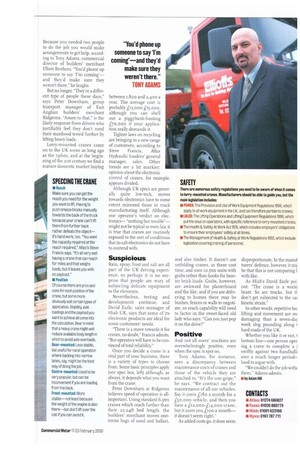SPECCING THE CRANE
Page 39

If you've noticed an error in this article please click here to report it so we can fix it.
• Reach Make sure you can get the reach you need for the weight you want to lift. Having to push breeze blocks manually towards the back of the truck because your crane can't lift them from further back rather defeats the object— It's hard work, too. "You want the capacity required at the reach required," Atlas's Steve Francis says. "It's all very well having a crane that can reach for miles and that weighs loads, but it leaves you with no payload."
• Position Of course there are pros and cons for each position of the crane, but some more
obviously suit certain types of application. Stability, axle loadings and the payload you want to achieve all come into the calculation. Bear in mind that a heavy crane might well reduce available body length in which to avoid axle overloads. Rear-mounted: Less stable, but useful for rural operation where backing lnto narrow lanes, say, might be the best way of doing the job. Centre-mounted: Used to be very popular, but can be inconvenient if you are loading from the back.
Front-mounted: More stable—not least because the weight of the engine is also there—but don't lift over the cab if you can avoid it.








































































































